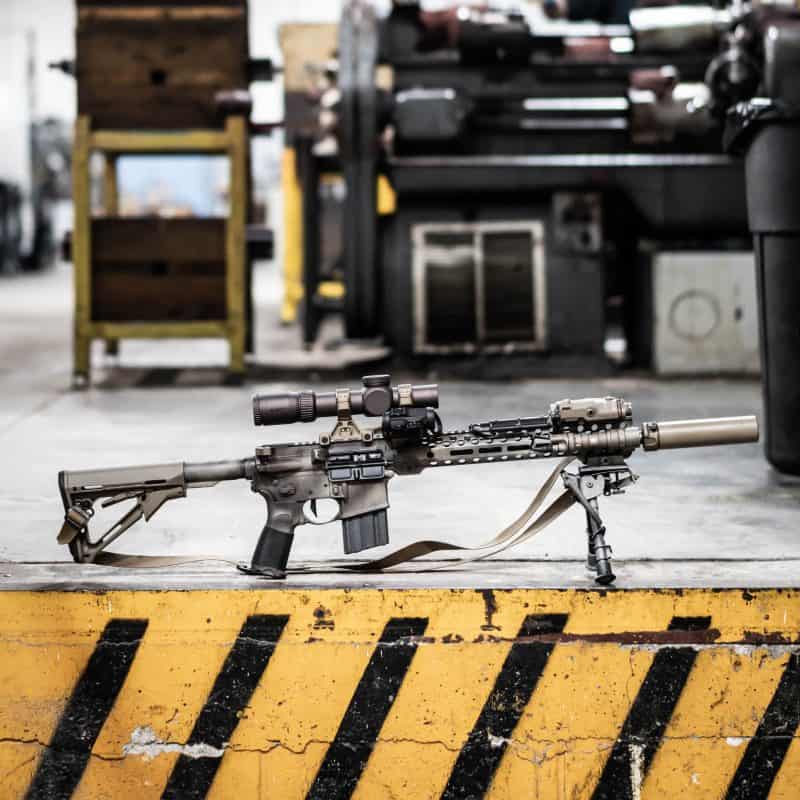AR-15 & 308 AR, Articles, Technical Articles, Uncategorized
How to setup your AR-15 with and without a suppressor
This video explores one way to set up an AR-15 for accurate and reliable function when using your rifle with and without a suppressor. The addition of a suppressor increases gas flow and back pressure which changes the timing in the AR-15’s 8-step cycle of operation. Here are a few tips we have learned to help maximize the performance of these rifles.



I’m curious if you are using a suppressor oriented charging handle ( Raptor-SD, ACH/SCH, PRI Gas buster, etc.) or a standard charging handle
Robert,
Yes, in this video there is a Radian Raptor SD charging handle installed. I do note that it reduces gas to the face as well as keeps oil spatter out of your eyes and off of your shooting glasses. I highly recommend them.
Great information as always. I’m building a 12.5″ with a carbine gas, unfortunately I couldn’t find a mid gas. I’m curious, I picked up a adjustable gas block but in my experience it’s just another failure point, what gas block would you recommend? I picked up a blue and red sprinco and a griffin armament suppressor specific buffer weight. Also using a radian raptor SD. Any advice is greatly appreciated.
I recently watch this video, purchased a core series 12.5 in barrel (order number 123712). I got the badger ordinance gas block and bcm tube from you as well.
This will be going on a bcm complete carbine lower, bcm upper receiver, with bcm BCG. My question: Is it optimal for me to switch out the H1 buffer that came with the complete lower, in favor of an H3? I am not planning on running surpressed anytime soon, but thought this may offer the optimal solution for now and future plans.
Leonard, I like to run the heaviest buffers that will reliably cycle in my rifle. This increases locked chamber dwell time and assists in producing more consistent chamber pressures and reduces wear on internal parts. An H2 or H3 buffer are in nearly all of my rifles and they run both suppressed and unsuppressed.
Do you recommend the VLTOR A5 Buffer system with these barrels?
Hello Sir,
In this video, what is the length of that CORE barrel on your build? What triggers do you run?
Hello,
This barrel is a 14.5” CORE Series barrel with a Surefire Warcomp and a BCM MCMR handguard. This rifle has a Geissele SSP trigger in it but we run a wide range of triggers depending on the guns intended purpose.
Thank you for the quick response! What kind of ammo grains does your setup like for unsuppressed?
I did catch you mentioning that about the buffers and I am still running the stock buffer so I will double-check what Smith and Wesson put in this rifle. Also, the “lock-time” concept was a new one to me, as was the 8 step cycle which, definitely gave me a new macro-to-micro perspective on how I’m running and upgrading my guns. I’ve got an Aero lower on the way and can’t wait to get in line for a 14.5 CORE Series barrel. I’m also looking forward to seeing more content from you, the detail and insight was some of the best a new gun-nerd like me has come across yet. Thanks Mike!
Super informative here. What does it mean if, today, my M&P S2 is ejecting at 2-O’clock?
(Shooting 5.56 with Brownell’s fully-auto chrome BCG.)
You might check head-space to ensure a proper (tight fitment). I would also encourage you to verify that you have a tight gas ring seal. I would also encourage you to check what buffer is in your rifle, most carbines ship with lightweight buffers as they are less expensive than a proper buffer which contains tungsten and is more expensive. I generally run either an H3 (5.4 oz.) buffer or an H2 (4.7 oz.) buffer. Heavier buffer weights increase lock time and produce more consistent chamber pressures while smoothing the rifles 8-step cycle of operation. This assists in increasing accuracy and reliability. All of this being said, 2 o’clock ejection is a sign of over-gassing and is not optimal. Many manufacturers fail to do their homework and test their products. Give us a call if you have any other questions.